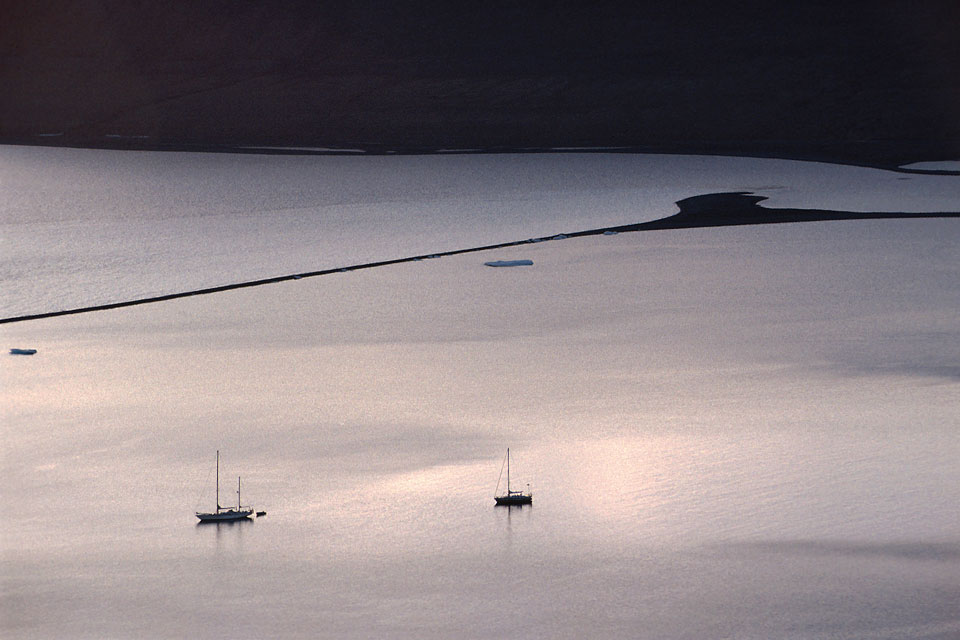
Northwest Passage
In the hundred plus years since Roald Amundsen transited the Northwest Passage, 184 successful voyages have been made across the top of the world, east and west bound. In the summer of 2012 alone, 21 vessels, 11 percent of that 184 total, made the transit: 18 private yachts, 2 cruise ships, and a tanker. One of the cruise ships, the 196-meters-long The World, was the largest ship to ever to do the trip, according to the data collected by R.K. Headland of the Scott Polar Research Institute at the University of Cambridge.
The rise in traffic from commercial, research, recreational, and offshore operations over routes made more passable with the record loss of polar ice ushers in a range of challenges. In September 2012, officials from the U.S. Coast Guard, the National Oceanic and Atmospheric Administration, and private industry gathered in Seattle at a program called Safe Navigation in the Arctic. Presented by the Transportation Research Board, part of the nonprofit National Research Council, its mission was to address navigational, policy, and international concerns in U.S. Arctic waters.
Seen in the context of melting polar ice, the numbers, especially in more recent years, loom larger. According to the National Snow and Ice Data Center, as of September 16, 2012, Arctic sea ice appeared to have reached its minimum extent for the year, 1.32 million square miles, the lowest seasonal minimum extent in the satellite record since 1979, further proof of a long-term
downward trend.
The 2012 minimum was also 293,000 square miles below the previous record minimum extent in the satellite record, which occurred on September 18, 2007. That loss is about the size of the state of Texas.
In terms of boats and passages, what does this mean? From 2007 to 2012, with passable routes, 75 transits of the Northwest Passage took place. That’s 40 percent of all recorded transits. Ketches, catamarans, and sloops were part of the mix, along with the icebreakers and tugs. And in those totals are boats and voyages familiar to CW readers: Cloud Nine, owned by the late Roger Swanson and the first American sailing vessel in history to transit the Northwest Passage from east to west; Ocean Watch, whose circumnavigation of the Americas was documented in these pages by crewmate and CW senior editor Herb McCormick; and the 27-foot St. Brendan, whose captain, Matt Rutherford, set a record for singlehanding the smallest boat ever through the Northwest Passage.
One can only wonder who’s next.








